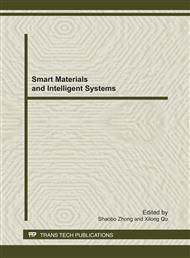p.45
p.50
p.54
p.58
p.62
p.67
p.71
p.76
p.81
Dynamic Simulation of the Boron Isotopes Separation by Chemical Exchange Method
Abstract:
Abstract The enrichment ratio of 10B in the top and bottom component with the dynamic change of feed fluctuation and periodic wave on the separation process of the boron isotopes separation by chemical exchange method had been studied and a dynamic model was set up. The results indicate that when the feed amount is in the column load limit, the dynamic responses of top and bottom separation plate match well with the condition when feed flow rate is invariable. While when the exchange column is overloaded, the feed flow rate variation influences 10B abundance ratio greatly. With the increasing of the fluctuation period, the longer the wave period, the bigger the amplitude around the average line in top product. However, big increase of feed fluctuation will reduce the 10B abundance ratio of bottom product.
Info:
Periodical:
Pages:
62-66
Citation:
Online since:
January 2012
Authors:
Keywords:
Price:
Сopyright:
© 2012 Trans Tech Publications Ltd. All Rights Reserved
Share:
Citation:


